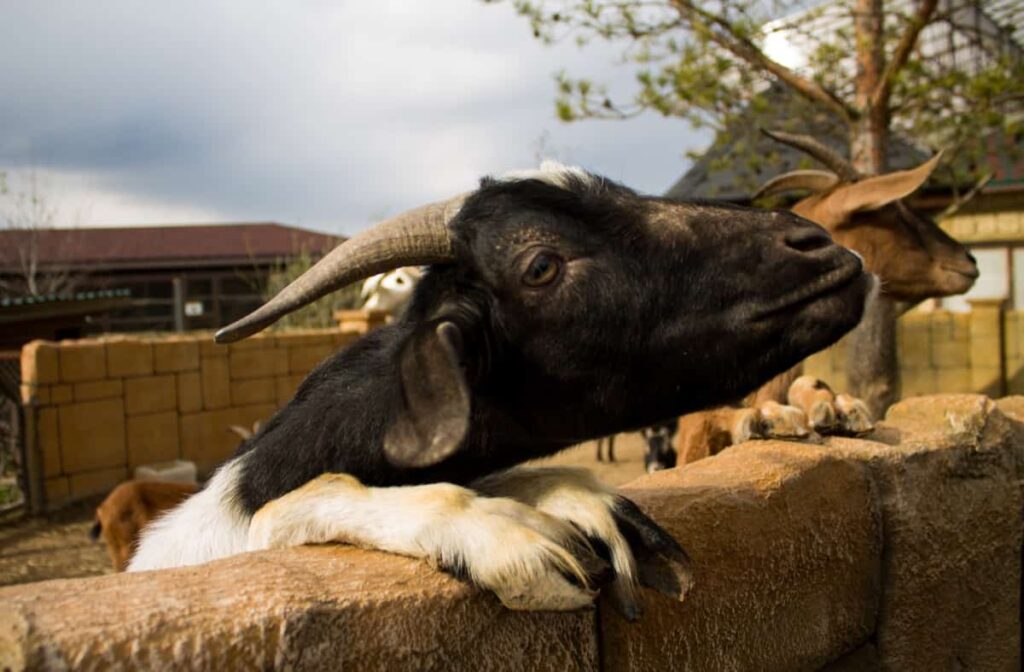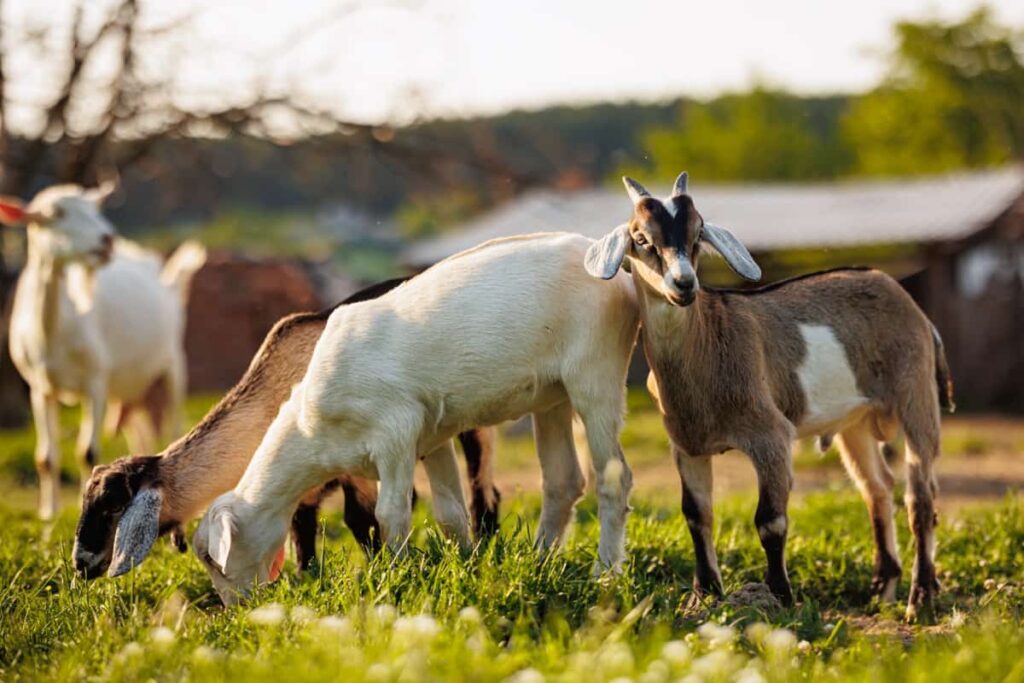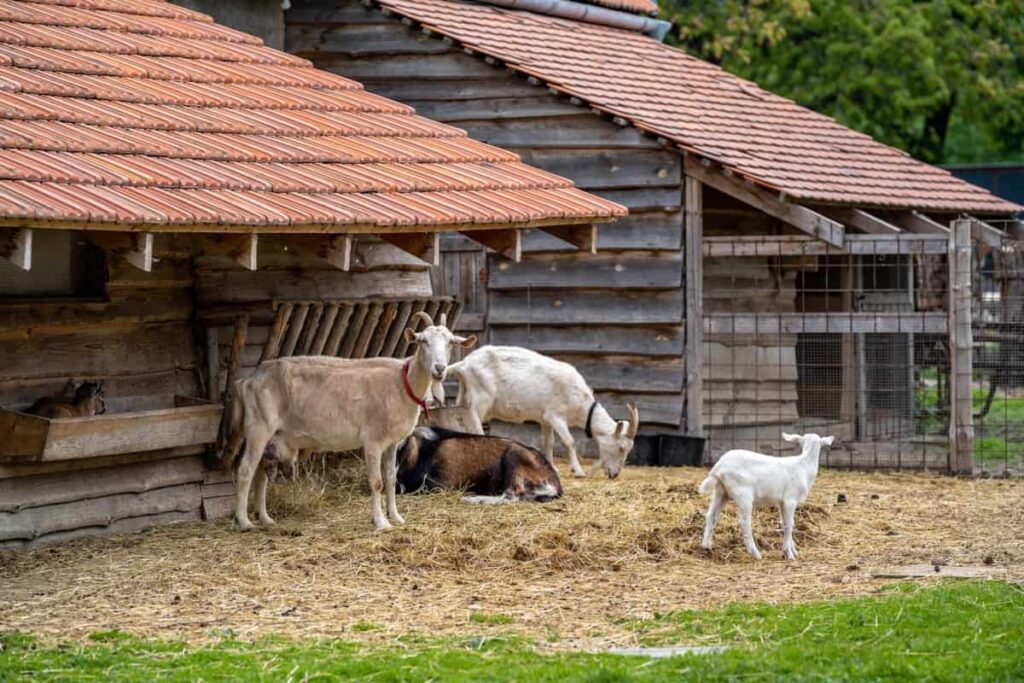Climate change is one of the major serious issues affecting several sectors, including agriculture. The agricultural industry has been dealing with the effects of climate change, which has resulted in greater droughts, heat waves, and other weather extremes. Goat farming is one such industry adversely damaged by climate change.

Goats are especially sensitive to temperature variations, and heat stress caused by rising temperatures can have a negative impact on their health, milk production, and overall productivity. In this post, we will provide the impact of climate change on goat farming, the challenges farmers face, and the strategies that can be adopted to adapt to and mitigate the effects of climate change on Goat farms.
The Impact of Climate Change on Goat Farming
What is Climate Change?
Climate change is the long-term change in the Earth’s temperature, rainfall, and weather patterns, mostly caused by human actions like burning fossil fuels, causing pollution, and cutting down trees. Human activities emit greenhouse gases into the atmosphere, trapping heat. This causes global warming and climate change.
Climate Change Effects on Goat Livestock
Livestock is particularly sensitive to temperature, precipitation, and weather patterns changes.
- Heat stress: High temperatures and humidity can cause heat stress in livestock, reducing their feed intake, weight gain, and milk production. Heat stress can also cause dehydration, heat exhaustion, and even death in extreme cases.
- Water scarcity: Droughts and changes in precipitation patterns can lead to water scarcity, affecting the quality and quantity of feed and water available to livestock. Water scarcity can also increase the risk of water-borne diseases and reduce hygiene standards.
- Disease spread: Climate change can lead to the spread of disease vectors and increase the risk of disease outbreaks in livestock. For example, ticks and other parasites thrive in warm and humid conditions, increasing the risk of tick-borne diseases such as anaplasmosis and babesiosis.
- Reduced feed quality: Changes in temperature and precipitation can affect the quality and quantity of feed available to livestock, reducing their nutrient intake and productivity. Droughts and high temperatures can also reduce the nutritional value of pasture, hay, and silage.
- Decreased reproductive success: Heat stress and changes in day length and seasonality can affect the reproductive success of livestock, leading to lower conception rates, higher rates of abortions, and lower fertility.
- Increased aggression: High temperatures and humidity can cause irritability and aggression in livestock, leading to an increased risk of injury and reduced productivity. This is particularly evident in confined and crowded animal housing systems.
In case you missed it: Marketing Trends/Strategies and Opportunities for Goat Products

Impact of Climate Change and Goat Farming
- Increased disease incidence: Climate change can lead to increased disease incidence and severity in goats. This can be due to the spread of disease vectors, such as ticks and mosquitoes, or changes in temperature and humidity that can lead to an increased risk of respiratory and digestive diseases.
- Increased mortality rates: Extreme weather events such as floods and heatwaves can increase goats’ mortality rates. This can be due to direct impacts such as drowning or heat stress or indirect impacts such as disease outbreaks.
- Changes in vegetation and grazing patterns: Changes in temperature and precipitation can also affect vegetation growth and grazing patterns, reducing feed availability for goats.
- The increased cost of production: Climate change can increase the cost of production for farmers due to the need to invest in infrastructure and management practices to adapt to changing weather patterns.
Adaptation Strategies for Goat Farmers
- Improved water management: Water scarcity is a significant concern in many regions affected by climate change. Goat farmers can improve water management by capturing rainwater, installing irrigation systems, and using drought-tolerant crops. Farmers can use techniques such as rainwater harvesting and installing irrigation systems to improve water availability for their animals.
- Shade and ventilation: Heat stress is a significant challenge for goats, and farmers can reduce its impact by providing shade and improving ventilation in barns and sheds. Farmers can use natural shade such as trees or build structures such as shade cloth or roofs to provide shade. This can help to reduce heat stress, maintain feed intake, and improve productivity.
- Drought-resistant crops: Farmers can plant drought-resistant crops, such as legumes, grasses, and shrubs, that require less water and can tolerate drought conditions. This can help to improve feed quality and quantity and reduce dependence on purchased feed.
- Animal breeding and selection: Farmers can select and breed goats that are more tolerant of heat stress, disease resistance, and drought conditions. This can help improve their herds’ resilience and reduce mortality rates.
- Risk management: Farmers can adopt risk management strategies such as crop insurance and diversification to protect themselves from the impacts of climate change. This can help to ensure a stable income and reduce the economic impact of climate-related risks.
- Soil management: Farmers can improve soil management practices using conservation agriculture, including minimum tillage, crop rotation, and organic fertilizers. This can help to improve soil health and increase soil moisture retention, improving crop yields and feed quality.
Environmental Implications on Goat Farming
Livestock, including goats, have significant environmental implications. Through manure management and land use changes, goat farming can contribute to soil degradation, water pollution, and greenhouse gas emissions. Overgrazing by goats can lead to soil erosion and nutrient depletion, affecting soil fertility and vegetation cover.
Improper manure management can also lead to water pollution, while enteric fermentation in goats can produce methane, a potent greenhouse gas. Implementing sustainable practices such as rotational grazing, manure management, and efficient feed use can help to mitigate these environmental impacts and improve the sustainability of goat farming operations.
In case you missed it: A Beginner’s Guide to Organic Urban Goat Farming

Conclusion
Climate change poses significant challenges for goat farmers, from increased disease incidence to reduced productivity and mortality rates. By adopting adaptation strategies such as shade and ventilation and implementing sustainable practices, farmers can improve the resilience and sustainability of their goat farming operations.
- Types of Grass Growing for Goat Farm
- How to Train Goats for Milking: A Beginners Guide
- Goat Milking Practices and Equipment: A Beginner’s Guide
- Goat Farming for Fiber: Producing Mohair and Cashmere
- Maximizing Goat Milk Production: Tips for Dairy Goat Farmers
- Goat Farming as a Family Business: Strategies for Success
- Profitable Kenya Goat Breeds for Commercial Dairy and Meat Business
- Unlock the Secrets of Oberhasli Goat: Discover Raising and Management Practices
- Ultimate Guide to Myotonic Goats: Explore Profile to Raising
Good